Today’s Current Affairs: 25th April 2025 for UPSC IAS exams, State PSC exams, SSC CGL, State SSC, RRB, Railways, Banking Exam & IBPS, etc
Table of Contents
Labeo uru and Labeo chekida : New Species of Rohu
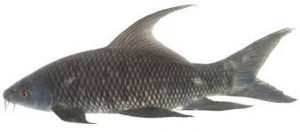
Labeo uru and Labeo chekida, two new species of freshwater Rohu fish, have been discovered in the Western Ghats region of India.
- Labeo uru and Labeo chekida are newly identified freshwater fish species belonging to the Rohu group (genus Labeo), discovered by ICAR-NBFGR scientists in the Western Ghats.
- Labeo uru was found in the Chandragiri River and is named for its distinctive sail-like dorsal fin.
- Labeo chekida, locally known as ‘kaka chekida’, is a small, dark-bodied fish discovered in the Chalakkudy River.
- The discovery resolves the long-standing taxonomic confusion with Labeo nigrescens, first described in 1870, by confirming the distinct identities of all three species based on unique morphological traits.
- This breakthrough highlights the rich and previously undocumented fish biodiversity of the Western Ghats, a recognised global biodiversity hotspot.
ALH Dhruv, : Features
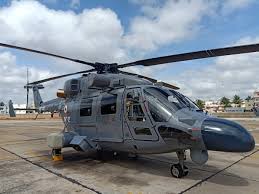
The Indian Army has resumed limited operations of the Advanced Light Helicopter (ALH) Dhruv in the Anantnag region.
- Advanced Light Helicopter or ALH-DHRUV is an indigenously developed utility aircraft by Hindustan Aeronautics Limited (HAL) with a twin-engine.
- It has a multi-role, multi-mission dimension to it.
- Even though its development started in 1984, and was initially designed with Germany’s assistance, Messerschmitt-Bolkow-Blohm (MBB), the helicopter was first flown in 1992 but entered service after certification in 2002.
- According to HAL, the aircraft is “type–certified” for military operations by the Centre for Military Airworthiness Certification and civil operations by the Directorate General of Civil Aviation. The major variants of Dhruv are classified as Dhruv Mk-I, Mk-II, Mk-III & Mk-IV.
- HAL has bagged orders for 73 ALH in 2017 from the Indian Army, Coast Guard, and Navy for ALH Mk-III & Mk-IV variants. It has also been supplied to the Nepal Army, the Mauritius Police, and the Maldives.
- Features:
- Twin-engine configuration
- Glass cockpit with advanced avionics
- Crashworthy airframe and landing gear
- Composite interchangeable main rotor blades
- Chaff and flare dispenser
- Helmet Pointing System
- Integrated self-protection suite
- On-board inert gas generation system
- Capability to operate in diverse terrains, including high-altitude regions
Indus Water Treaty : India suspended
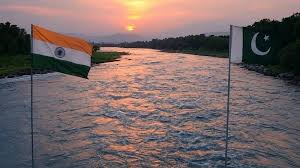
India suspended the Indus Water Treaty (IWT) following a deadly militant attack in Pahalgam, Kashmir, which killed 26 civilians.
- The Indus Waters Treaty was signed between India and Pakistan on September 19, 1960, with the World Bank acting as a mediator.
- The treaty was designed to ensure cooperation and information-sharing between the two countries regarding water use from the Indus River system, which includes six rivers: Indus, Jhelum, Chenab, Ravi, Beas, and Sutlej.
- The treaty allocated the three western rivers—Indus, Jhelum, and Chenab—to Pakistan for unrestricted use, while India retained the three eastern rivers—Ravi, Beas, and Sutlej—for its exclusive use.
- India was allowed limited, non-consumptive uses of the western rivers for domestic, agricultural, and hydroelectric purposes, under strict conditions.
- This arrangement meant that around 80% of the total water volume was granted to Pakistan, while India received the remaining 20%.
- To manage the treaty’s implementation, both nations agreed to establish a Permanent Indus Commission (PIC), which is required to meet annually to discuss technical matters and facilitate data exchange.
Arun-III Hydro Power Project:
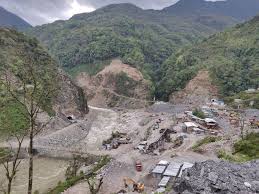
Indian Minister of Power and Housing Affairs, recently visited the Arun-III Hydel Project, which is being constructed with Indian assistance, during his official trip to Nepal.
- It is a 900 MW run-of-the-river hydropower project located on the Arun River in the Sankhuwasabha District of Eastern Nepal.
- It envisages about 70 m high concrete gravity dam and Head Race Tunnel (HRT) of 11.74 km with an underground Power House containing four generating units of 225 MW each on the Left Bank.
- It is being developed with Indian assistance at a cost of Rs. 144 billion.
- Once completed, it will be the biggest hydroelectric facility in Nepal.
- It is being developed on a build-own-operate-and-transfer (BOOT) basis by Satluj Jal Vidyut Nigam (SJVN) Arun-III Power Development Company (SAPDC), a wholly owned subsidiary of India’s SJVN.
- SJVN is a joint venture between the Government of India and the Government of Himachal Pradesh.
- SAPDC will operate the facility for a period of 25 years, excluding the construction period of five years, before transferring ownership to the Nepal government.
- Nepal will receive 21.9% of the electricity generated at the power plant as free power during these initial 25 years of commercial operations.
- The project will provide surplus power to India, strengthening economic linkages with Nepal.
- The power from the project shall be exported from Dhalkebar in Nepal to Muzaffarpur in India.
National Commission for Allied and Healthcare Professions:
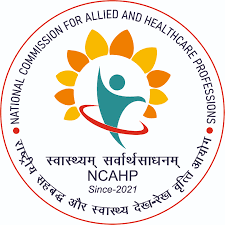
The Union Health Ministry recently launched new competency-based curricula for 10 allied healthcare professions in collaboration with the National Commission for Allied and Healthcare Professions (NCAHP).
- NCAHP is a statutory body established under the NCAHP Act 2021 to regulate and maintain standards of education and services of allied and healthcare professionals.
- It aims to enhance the quality of healthcare services by ensuring that all practitioners in the allied health fields meet established national standards.
- By focusing on both education and practical competencies, the NCAHP plays a significant role in safeguarding public health and enhancing the overall effectiveness of healthcare systems.
- The key objective of the NCAHP is to oversee the registration, training, and accreditation of various allied healthcare practitioners.
- This encompasses a broad range of professions, including but not limited to, psychologists, medical technologists, physiotherapists, and occupational therapists.
- By providing a framework for the evaluation of educational institutions and training programs, the NCAHP ensures that practitioners are equipped with the necessary skills and knowledge to deliver high-quality patient care.
- Another critical aspect of the NCAHP’s role is to facilitate ongoing professional development.
- The commission promotes continuous learning among allied healthcare professionals, encouraging them to update their skills in accordance with the latest advancements in the healthcare industry.
- This commitment to lifelong learning not only benefits the individual practitioners but also leads to better patient outcomes and a more proficient healthcare system overall.
- It also functions as a central repository for information on professional standards, educational pathways, and regulatory requirements for practitioners.
- Moreover, the NCAHP contributes to the overall improvement of healthcare services by engaging in research and policy-making activities that influence health sector reforms.
SAARC Visa Exemption Scheme:
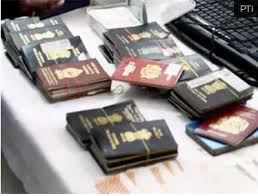
The Cabinet Committee on Security (CCS) has revoked the South Asian Association for Regional Cooperation (SAARC) Visa Exemption Scheme (SVES) for Pakistani nationals following the Pahalgam terror attack.
- This marks a firm diplomatic response to Pakistan’s continued support for cross-border terrorism.
- SAARC Visa Exemption Scheme launched in 1992, based on the decision of the 4th SAARC Summit in 1988 held in Islamabad.
- It is designed to facilitate people-to-people contact and regional cooperation among SAARC nations.
- It permits select individuals from member countries to travel without a visa using a Special Travel Document.
- It covers 24 categories, including dignitaries, judges, parliamentarians, officials, businesspersons, journalists, and sportspersons.
- Visa Stickers are issued by each SAARC member state to eligible individuals from their country, typically valid for one year and reviewed regularly by immigration authorities.
- Citizens of Nepal and Bhutan do not need a visa to enter India. For Pakistani nationals, only select categories were eligible for a multiple-entry Business Visa—initially valid for one year and limited to 10 locations.
- In 2015, India revised the rules, allowing special-category Pakistani businessmen a multiple-entry visa valid for up to three years, restricted to 15 designated places.
- Among SAARC countries, Sri Lankan nationals were eligible for the e-Tourist Visa facility.
- Indian nationals do not need a visa to visit Nepal and Bhutan, while other SAARC countries offer Business Visa facilities to Indian citizens.
- The CCS notified that all SAARC Visa Exemption Scheme (SVES) visas issued to Pakistani nationals are now void, and those currently in India under this scheme must leave the country
National Panchayati Raj Day and Awards:
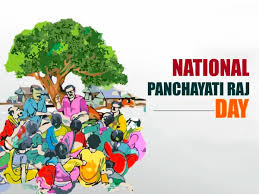
The Ministry of Panchayati Raj, on the occasion of National Panchayati Raj Day 2025, presented the Special Category National Panchayat Awards- 2025.
- National Panchayati Raj Day is celebrated on 24th April, marks the enactment of the 73rd Constitutional Amendment Act, 1992, which granted constitutional status to Panchayati Raj Institutions (PRIs). The first celebration took place in 2010.
- Special Category National Panchayat Award 2025:
- Atma Nirbhar Panchayat Special Award: For top 3 GPs enhancing Own Source of Revenue.
- Climate Action Special Panchayat Award: For GPs moving toward net-zero emissions and renewable energy.
- Panchayat Kshamta Nirmaan Sarvottam Sansthan Puraskar: For 3 institutions supporting PRIs in LSDG implementation.
Judicial Despotism:

Recent Supreme Court rulings, including on Article 370, Governor’s Bill assent powers, and judicial use of Article 142, have reignited debates over judicial overreach.
- Judicial despotism refers to a scenario where unelected judges exercise excessive power, overriding legislative and executive authority.
- It arises when courts act beyond interpretation, venturing into policy-making or governance roles.
Features of Judicial Despotism:
-
- Frequent invocation of Article 142: The power to ensure “complete justice” can be used to bypass statutory procedures (e.g., Babri Masjid ruling). Expanding PIL jurisdiction: Courts entertain petitions even without personal grievance, affecting separation of powers. Weakening democratic accountability: Judges face no electoral scrutiny unlike elected lawmakers. Supersession in appointments: Judicial collegium bypasses seniority, often in the name of diversity or discretion. Policy pronouncements without legislative mandate: E.g., issuing guidelines on mob lynching or banning crackers without codified law.
Jana Sevaka:
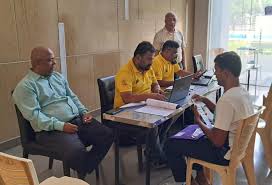
Jana Sevaka, Karnataka’s doorstep service delivery initiative, recently facilitated e-Khata registration for over 350 property owners in Bengaluru’s Purva Seasons community.
- Jana Sevaka is a flagship initiative launched by the Government of Karnataka in 2019 to deliver essential government services at the doorstep of citizens, especially benefiting senior citizens, persons with disabilities, and other vulnerable groups.
- Citizens can book services via helpline or mobile app; officials visit homes with biometric kits and documentation tools.
- Includes Aadhaar updates, caste/income certificates, senior citizen cards, voter ID updates, and now e-Khata.
- Nominal Fee services are delivered at a fixed government-notified service charge.
- Promotes digital inclusion for people unfamiliar with online platforms, especially in urban governance processes.
- Enables RWAs to organise camps for large-scale public facilitation (e.g., Aadhaar for kids, e-Khata updates).
Non-Tariff Barriers:

During his visit to Jaipur, US Vice President urged India to eliminate non-tariff barriers (NTBs) to enhance market access for American goods.
- NTBs are trade restrictions other than customs duties that hinder the free flow of goods and services across borders.
- They include both technical (e.g., certification) and non-technical (e.g., quotas) regulatory measures.
- Increase compliance costs for exporters through mandatory testing, documentation, and redesign.
- Cause logistical delays at ports due to complex inspections and procedural formalities.
- Reduce the competitiveness of exporters, particularly from developing countries.
- Create uncertainty and risk, deterring small businesses from entering global markets.
- NTBs can be used strategically to protect domestic industries without violating WTO tariff rules.
- They often lack transparency, creating an uneven playing field for global trade.
- NTBs, if arbitrary or without scientific basis, violate the principle of fair trade under WTO norms.
Gold Prices Rise:

Gold prices in India have hit historic highs, breaching ₹1 lakh per 10 grams on MCX, driven by global stagflation concerns, US-China tensions, and rising central bank demand, including the RBI.
- The gold rate refers to the market price of gold, typically measured per 10 grams in India.
- It serves as a key indicator for jewellery buyers, investors, and commodity traders.
- Global demand, supply, and events (like wars or inflation) influence the price of gold in India.
- A weaker rupee against the US dollar makes gold imports costlier, raising domestic prices.
- India’s high import dependency means any change in import duties or GST directly affects price.
- Festival and wedding seasons see surges in demand, pushing up prices due to limited supply.
- MCX Futures & Bullion Market Benchmarks: Gold futures traded on MCX (Multi Commodity Exchange) provide a reference rate for domestic pricing.
- Final jewellery prices include purity grade (22K, 24K), making charges, local taxes, and retailer margins.
- Gold prices in India vary significantly across states and cities, driven by several factors. From transportation costs to local demand, these elements collectively determine the final price consumers pay.
MeitY Launches ‘I Am Circular’ Coffee Table Book:
Ministry of Electronics and Information Technology (MeitY) in collaboration with the International Council for Circular Economy (ICCE) launched the ‘I Am Circular’ Coffee Table Book. The book is a rich showcase of India’s commitment to sustainability and innovation through the lens of the circular economy a system that emphasizes reusing, recycling, and reducing waste. The event aimed to promote tech-integrated sustainable development and recognized 30 groundbreaking Indian innovations that are shaping a circular economy through smart, scalable, and sustainable practices.
Pakistan Suspends Simla Agreement and Closes Border, Airspace, Trade with India:
Pakistan has suspended the 1972 Simla Agreement, closed the Wagah border, halted all trade, and banned Indian airlines from using its airspace. This decision follows India’s move to suspend the Indus Waters Treaty and downgrade diplomatic ties in the aftermath of the Pahalgam terror attack, which left 26 civilians dead. As relations between the two nuclear-armed neighbors continue to spiral, all existing bilateral mechanisms are now effectively frozen.
IISc Tops Times Higher Education Asia Rankings 2025:
The Times Higher Education (THE) Asia University Rankings 2025 were unveiled on April 23, showcasing the top universities in Asia. With 853 universities from 35 countries and territories included in this year’s rankings, the list highlights the leading institutions excelling in research, teaching, and innovation across the continent. The Indian Institute of Science (IISc) continues to shine, securing the top spot for Indian universities, ranked 38th overall in Asia.
Life Insurance Premium Mobilisation Rises by 5.13% in FY25:
The Indian life insurance industry witnessed a healthy growth of 5.13% in total new business premium collection in the financial year 2024–25, showing improved momentum compared to the previous year. The individual new business premium segment surged by 11.17%, indicating increased participation from first-time policyholders. This growth reflects the industry’s strategic focus on expanding market reach and providing comprehensive financial protection.
World Book and Copyright Day 2025:
World Book and Copyright Day, celebrated on April 23rd each year, is a global celebration of books, authors, and the importance of protecting intellectual property rights through copyright laws. This day is marked by events and activities worldwide, all aimed at promoting the love for reading and writing, while also creating awareness about the significance of education, literacy, and intellectual property protection. The 2025 theme emphasizes the role literature plays in achieving the Sustainable Development Goals (SDGs), highlighting how literature can inspire positive action and awareness on pressing global issues such as poverty, hunger, and inequality.




